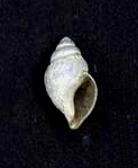
Puffins are any of three species of small alcids (auks) in the bird genus Fratercula. These are pelagic seabirds that feed primarily by diving in the water. They breed in large colonies on coastal cliffs or offshore islands, nesting in crevices among rocks or in burrows in the soil. Two species, the tufted puffin and horned puffin, are found in the North Pacific Ocean, while the Atlantic puffin is found in the North Atlantic Ocean.

The dunlin is a small wader in the genus Calidris. The English name is a dialect form of "dunling", first recorded in 1531–1532. It derives from dun, "dull brown", with the suffix -ling, meaning a person or thing with the given quality.

Camelids are members of the biological family Camelidae, the only currently living family in the suborder Tylopoda. The seven extant members of this group are: dromedary camels, Bactrian camels, wild Bactrian camels, llamas, alpacas, vicuñas, and guanacos. Camelids are even-toed ungulates classified in the order Artiodactyla, along with species including whales, pigs, deer, cattle, and antelopes.

Oswald Heer, Swiss geologist and naturalist, was born at Niederuzwil in Canton of St. Gallen and died in Lausanne.

The Casuariiformes is an order of large flightless birds that has four surviving members: the three species of cassowary, and the only remaining species of emu. They are divided into either a single family, Casuariidae, or more typically two, with the emu splitting off into its own family, Dromaiidae.

Doryaspis is an extinct genus of primitive jawless fish that lived in the Devonian period. Fossils have been discovered in Spitsbergen.
Canadaga is a flightless bird genus from the Late Cretaceous. The single known species is Canadaga arctica. It lived in the shallow seas around what today is Bylot and Devon Islands in Nunavut, Canada. Its fossils were found in rocks dated to the Campanian to mid-Maastrichtian age, about 67 million years ago.

The Arcticidae are a family of marine clams in the order Venerida. The only living species in the family is Arctica islandica. There are also many fossil species classified in a number of genera.

Cladophlebis is an extinct form genus of fern, used to refer to Paleozoic and Mesozoic fern leaves that have "fern fronds with pinnules that are attached to the rachis, and have a median vein that runs to the apex of the pinnule, and veins from that are curved and dichotomise". By convention this genus is not used to refer to fossil ferns from the Cenozoic. Ferns with this morphology belong to several families, including Osmundaceae, Dicksoniaceae and Schizaeaceae. Ferns with this morphology are common during the Paleozoic and Mesozoic in both the northern and southern hemispheres.

Nesolagus is a genus of rabbits containing three species of striped rabbit: the Annamite striped rabbit, the Sumatran striped rabbit, and the extinct species N. sinensis. Overall there is very little known about the genus as a whole, most information coming from the Sumatran rabbit.

Acrolepis is an extinct genus of prehistoric marine bony fish that lived from the Famennian stage of the Devonian to the early Triassic epoch. Some species from the Early Triassic of Tasmania are also ascribed to Acrolepis.

Boreosomus is an extinct genus of Triassic marine ray-finned fish. It was first described from the Arctic island of Spitsbergen, hence its genus name, but was later also discovered in other parts of the world. The type species is Boreosomus arcticus.

Barrosasaurus is a genus of titanosaurian sauropod dinosaur, first described by paleontologists Leonardo Salgado and Rodolfo Coria in 2009. The fossils, consisting of three fossil dorsal (back) vertebrae, are well-preserved but incomplete. They were discovered in the Anacleto Formation of the Neuquén province of western Argentina. The type species is Barrosasaurus casamiquelai. The genus name is named after the Sierra Barrosa in Neuquén. The specific epithet honours the Argentinian paleontologist Rodolfo Magín Casamiquela. It's been estimated to be 18 meters in length and 13.5 tonnes in weight.

Propebela arctica is a species of sea snail, a marine gastropod mollusk in the family Mangeliidae.
Stigmellites is a genus of Lepidopteran fossils. It is only known from trace fossils of leaf mines.

Ptycholepiformes are an extinct order of prehistoric ray-finned fish that existed during the Triassic period and the Early Jurassic epoch. The order includes the genera Acrorhabdus, Ardoreosomus, Boreosomus, Chungkingichthys, Ptycholepis, and Yuchoulepis. Although several families have been proposed, some studies place all these genera in the same family, Ptycholepididae.
Pessopteryx is an extinct genus of ichthyosaur from the Early Triassic (Olenekian) of Svalbard, Norway. The genus originally contained four species, P. nisseri, P. arctica, P. pinguis, and P. minor, which were named in 1910 by Carl Wiman. Only P. nisseri is still considered valid; P. arctica and P. pinguis are considered nomina dubia while P. minor was reassigned to the tenuous genus Isfjordosaurus. Omphalosaurus nisseri, Merriamosaurus hulkei, and Rotundopteryx hulkei are all junior synonyms of P. nisseri.

Tingmiatornis is a genus of flighted and possibly diving ornithurine dinosaur from the High Arctic of Canada. The genus contains a single species, T. arctica, described in 2016, which lived during the Turonian epoch of the Cretaceous.
Paraglaciecola oceanifecundans is a bacterium from the genus of Paraglaciecola which has been isolated from the Southern Ocean.















